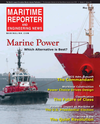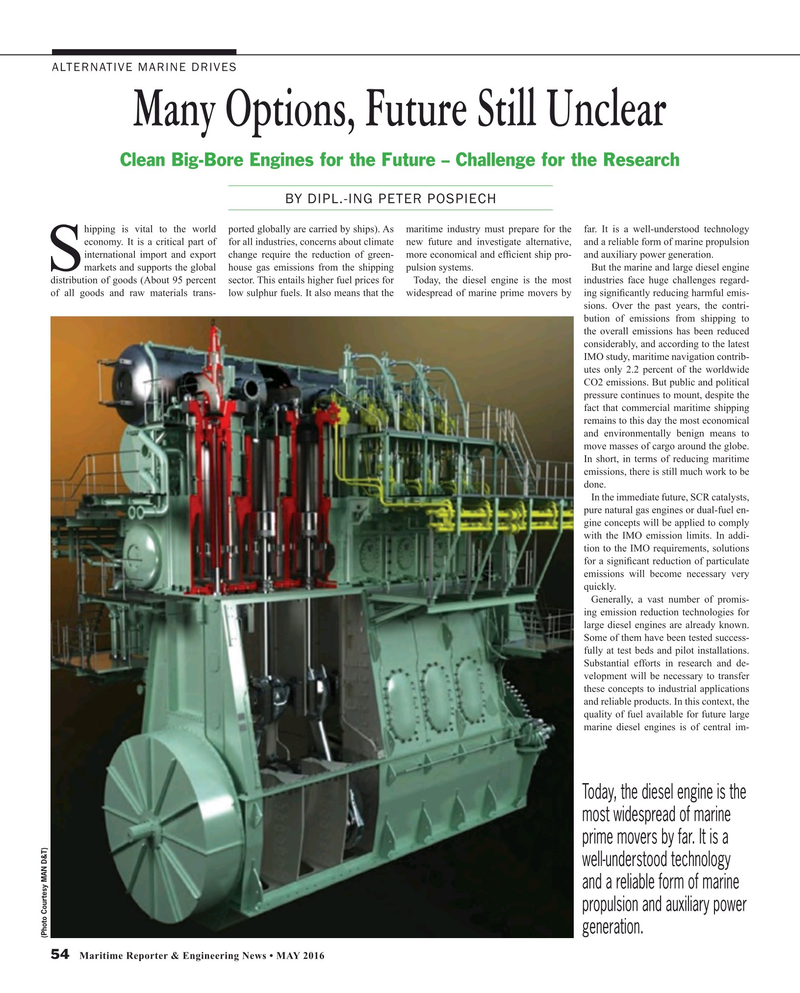
Page 54: of Maritime Reporter Magazine (May 2016)
The Marine Propulsion Edition
Read this page in Pdf, Flash or Html5 edition of May 2016 Maritime Reporter Magazine
ALTERNATIVE MARINE DRIVES
Many Options, Future Still Unclear
Clean Big-Bore Engines for the Future – Challenge for the Research
BY DIPL.-ING PETER POSPIECH hipping is vital to the world ported globally are carried by ships). As maritime industry must prepare for the far. It is a well-understood technology economy. It is a critical part of for all industries, concerns about climate new future and investigate alternative, and a reliable form of marine propulsion international import and export change require the reduction of green- more economical and ef? cient ship pro- and auxiliary power generation.
markets and supports the global house gas emissions from the shipping pulsion systems. But the marine and large diesel engine
S distribution of goods (About 95 percent sector. This entails higher fuel prices for Today, the diesel engine is the most industries face huge challenges regard- of all goods and raw materials trans- low sulphur fuels. It also means that the widespread of marine prime movers by ing signi? cantly reducing harmful emis- sions. Over the past years, the contri- bution of emissions from shipping to the overall emissions has been reduced considerably, and according to the latest
IMO study, maritime navigation contrib- utes only 2.2 percent of the worldwide
CO2 emissions. But public and political pressure continues to mount, despite the fact that commercial maritime shipping remains to this day the most economical and environmentally benign means to move masses of cargo around the globe.
In short, in terms of reducing maritime emissions, there is still much work to be done.
In the immediate future, SCR catalysts, pure natural gas engines or dual-fuel en- gine concepts will be applied to comply with the IMO emission limits. In addi- tion to the IMO requirements, solutions for a signi? cant reduction of particulate emissions will become necessary very quickly.
Generally, a vast number of promis- ing emission reduction technologies for large diesel engines are already known.
Some of them have been tested success- fully at test beds and pilot installations.
Substantial efforts in research and de- velopment will be necessary to transfer these concepts to industrial applications and reliable products. In this context, the quality of fuel available for future large marine diesel engines is of central im-
Today, the diesel engine is the most widespread of marine prime movers by far. It is a well-understood technology and a reliable form of marine propulsion and auxiliary power generation.
(Photo Courtesy MAN D&T) 54 Maritime Reporter & Engineering News • MAY 2016
MR #5 (50-57).indd 54 5/2/2016 10:50:46 AM

 53
53

 55
55
